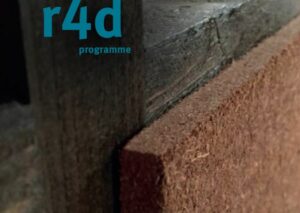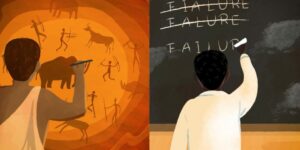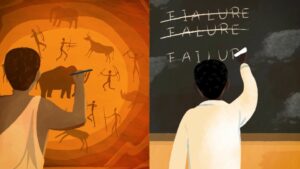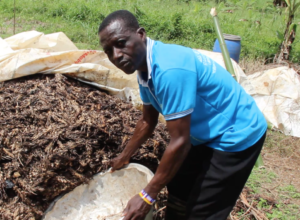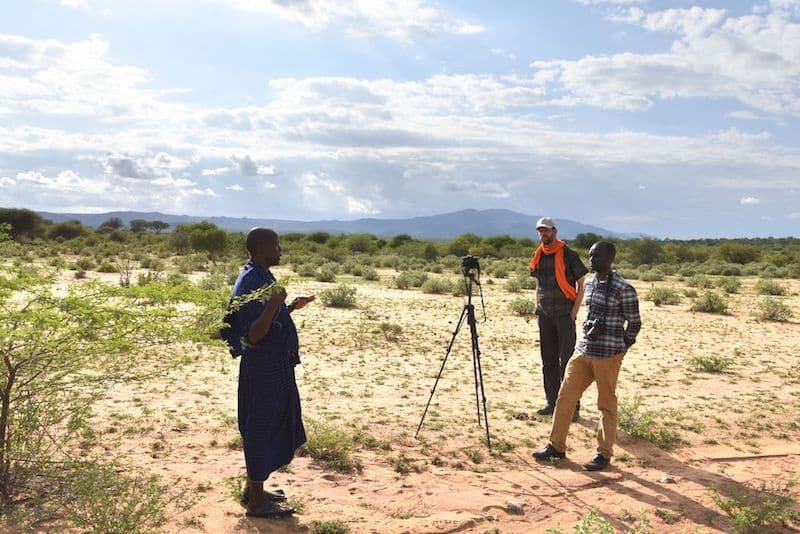
“It changes the relationship”: The power of film in research for development
“I must say it is unusual.”
René Eschen was new to the world of filmmaking. As a biologist at the Centre for Agricultural Bioscience International (CABI), even interviews were hardly ever part of his job.
But like other colleagues who signed up for the Digital Storytellers (DST) project, he took the plunge. The experience turned out to be not just about making a video clip, but also looking at his research through a different lens.
Eschen explains how by the time filming was done, there was a different bond with the local people involved in the team’s work on invasive species in rural Tanzania. “The fact that we spend time with them, using a camera and asking them about their experiences, I think made impact on them. It changes the relationship.”
The DST project’s 22 short video clips, representing 15 projects, were produced with footage collected by researchers during their fieldwork. Most of them filmed for the very first time, guided through the process by Sonja Schenkel, founder of Paititi Lab.
Schenkel managed the project and created the conditions for producing the films, giving the researchers basic training and steering the editing from Switzerland with a team of collaborators organised into networks around the world. Though it spans 20 countries, the DST project’s carbon footprint was nearly zero.
Participatory filmmaking is something Schenkel knows well. “I enjoy observing people discovering their voice in this medium.” Six of the researchers who took part now share their experience of using film to tell stories about research for development.
“I could show what is happening on the ground – what is the reality.”
Yash Man Karmacharya, Nepal
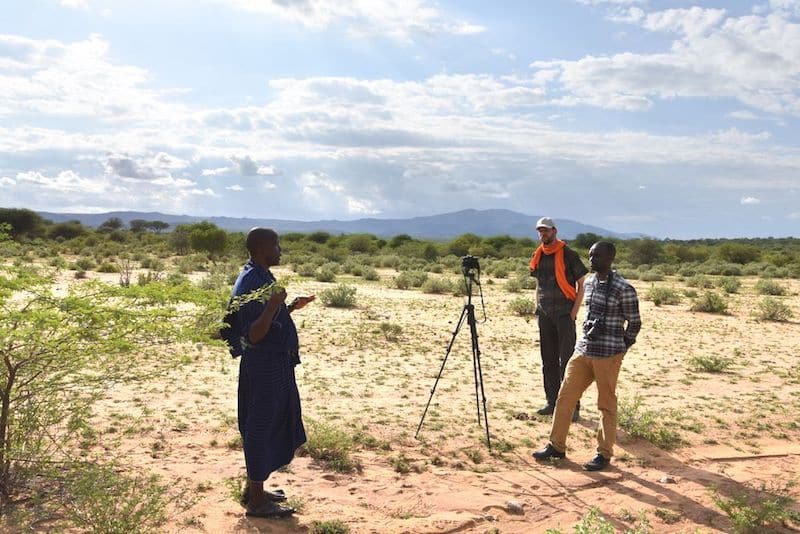
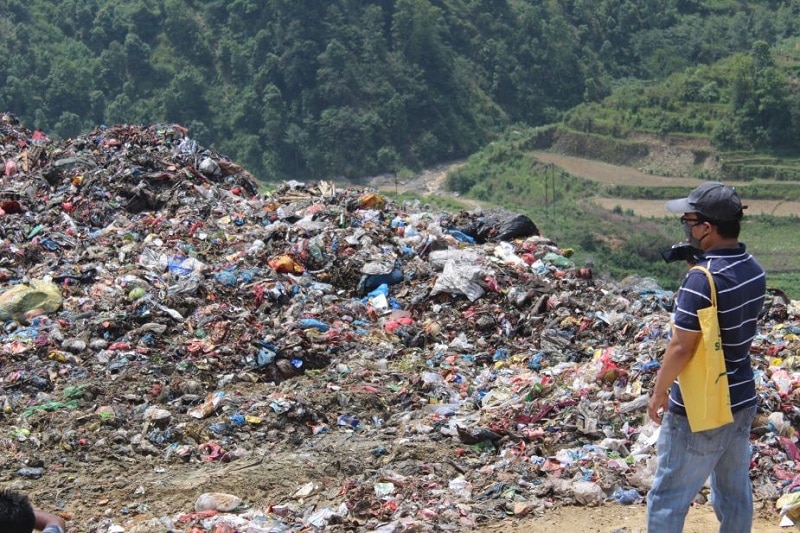
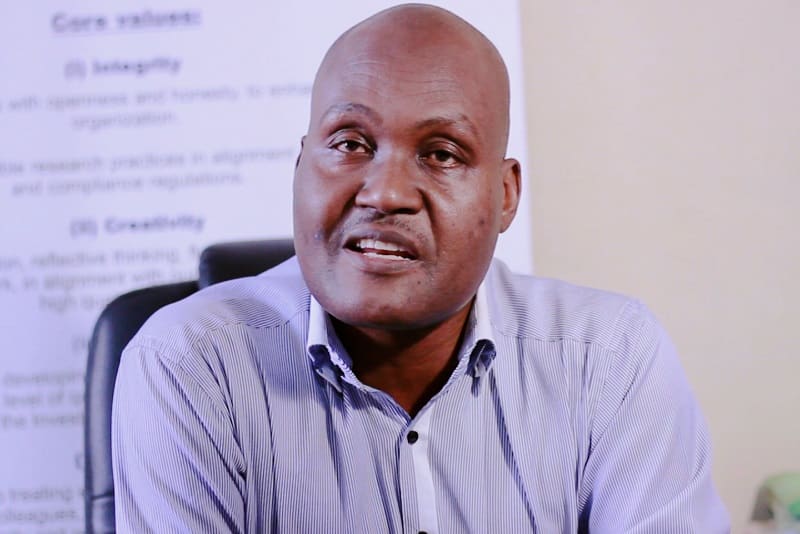
Picture 1: René Eschen observes as Charles Kilawe interviews Chairman William in Simanjiro, Tanzania (Credit: John Richard)
Picture 2:Yash Man Karmacharya filming at Sisdole landfill site, Nepal (Credit: Sajan Rajthala)
Picture 3: James Mwera featuring in the Digital Storytellers video (Credit: Iliana Kohler)
Gathering footage
It wasn’t quite as simple as picking up a camera. The researchers were trained to first think about the story they’d like to tell by producing a plan or ‘story grid’. This helps to guide decisions about what footage to collect before even heading to the field. After filming, they looked through the footage to pick out statements that could be put together to create a narrative.
“It’s not only about interviewing people and having bits of text, but also making sure that you have enough images to put things literally into context,” says Eschen. “So that the viewer actually sees the landscape, or the issues that people deal with, rather than only hearing from them.”
In most cases, people were eager to talk and tell their stories. “They really opened their houses [and] their hearts, they spoke their minds,” says Adriana Bessa, a Senior Research Fellow at the Geneva Academy of International Humanitarian Law and Human Rights, who produced three films about food sustainability in Brazil and Kenya.
Bessa found that filming could slot easily into fieldwork. “One of the problems we have when we go filming is time, budgets and local partners that are going to open doors for us,” she explains. “Because we had the whole structure already organised and budgeted for field work, it was much easier to include the video parts to it.”
At times, getting local people on board for a shoot was more complicated. Yash Man Karmacharya, a programme officer at Centre for Integrated Urban Developmentin Nepal who produced a film about female waste pickers around Kathmandu, had to do some persuading. The first time he visited the landfill site selected for the project, he found the waste pickers hesitant to appear on camera. There was a history behind the jitters: a previous filming project widely disseminated in the media had zoomed in on individual workers. There was ongoing friction with local authorities, and everyone was nervous.
“They said ‘don’t bring out political [issues in the film]. But if you want to show in the positive way to improve development, then you can do that’,” says Karmacharya, who has a passion for film and wasn’t about to give up. “That was the solution.”
“[Some people in remote areas] don’t feel comfortable if they are filmed. Maybe this is changing now with smartphones. But that’s also different if there is an external person doing that – then they don’t know what’s going to happen with that material.”
Andrea Leuenberger, Switzerland
Bumps along the road
It wasn’t always easy for the researchers to get the ball rolling. Everything about film production was new; different from academic work. It took energy to work out how to approach it. And production had to be juggled alongside other commitments. Sometimes colleagues chipped in, sometimes the filming was an add-on that had to be slotted into research activities. Combining the two – and doing it well – was a tough balance to strike.
At times, it even felt awkward to carry hefty equipment or ask for permission to film. “Our fieldwork took place in Tanzania, in very remote areas,” says Andrea Leuenberger from the Swiss Tropical and Public Health Institute, who filmed for a project about the health impacts of industrial mines, a politically sensitive issue. “It took me quite some time to take out the camera.”
Different teams found other bumps along the road. Communication was patchy in off-grid areas. Plans had to adapt because of political changes or other emergencies. Some interviewees were hard to reach and pin down. And the editing process threw up new time demands and editorial dilemmas which, though part and parcel of storytelling projects, are less familiar in the world of research. “[Some] projects just had to really dig deep into the learning [of] what it means to do visual storytelling,” says Schenkel.
There was much back and forth so the researchers could input on editing decisions. Without physical meetings, that wasn’t easy. There were compromises to strike on how people should and could be represented in a way that’s ethical and effective for a visual story. For some projects, the challenges were just too demanding and even unworkable.
Sometimes it comes down to something as specific as the subtitles that accompany a film. “Subtitles must be very concise,” says Bessa. “But if you make [them] too concise, it ends up being too simplistic. If we are fighting stereotypes, this is quite critical – when the subtitles only say a few words in a very simple way, and people are developing their views in a very deep way. It was difficult to find a solution that was optimal.”
Long hours were spent, and masses of footage collected. At times it seemed a huge investment for a three-minute video clip. Some researchers wished for more than one production, or that the films could be longer. Others saw value in brevity. “Nowadays people don’t want to sit for one hour, or 10 minutes,” says Karmacharya. “Just two minutes, five minutes – this is perfect.”
Angela Alu, a doctoral candidate at the University of Ghana, whoco-produceda film aboutabnormal pricing in commodities exports and imports, sees this as a way to reach a wider audience. “A very short video on YouTube can reach a lot more people who would never otherwise read a journal article.”
“We have this footage of a lady standing in front of a pile of wood, maybe 20 metres long [by] five metres wide or so. And she told [us about] how much time it had taken her to build this pile of wood by chopping down trees and moving branches and piling it all up. And how she had employed people to do this for her. And then she said okay, this is going to make so many bags of charcoal, and I sell them at this price per bag. But if you make this calculation, then you realise that it’s not worth it: for three weeks of work, she makes very little. And one of the questions [we asked] was, if there was something else to do, would you prefer doing something else? And [she said], of course – this doesn’t pay enough money to get my children to school or to build a better house. Hearing this really influenced the way I see the landscape.”
René Eschen, Switzerland
“In academia, when we [do] field work, [people] are voiceless. We get information from them, we interpret the information they give us. We make their picture according to our tools, as a researcher. We are intermediaries between them and who is going to read our studies. [But] once you start filming them, they’re independent. There is no one paraphrasing what they’re saying. For me, it’s [about] providing people with this direct way to talk to the world – and then myself as a researcher, I can make comments on that, I can contextualise that, but I’m not the one in charge of saying to the public what they said or what they think or the way they live.”
Adriana Bessa, Switzerland/Brazil
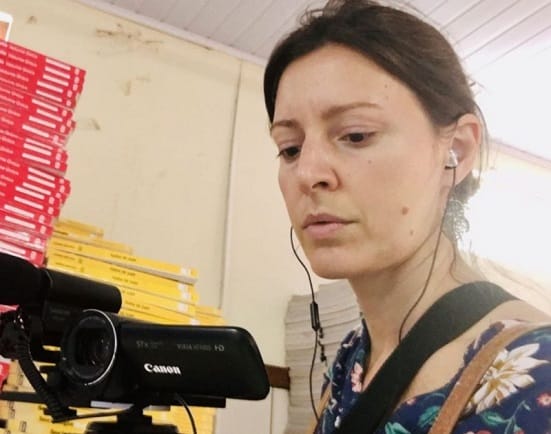
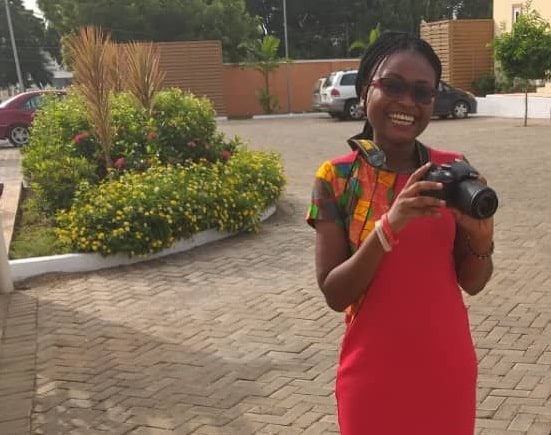
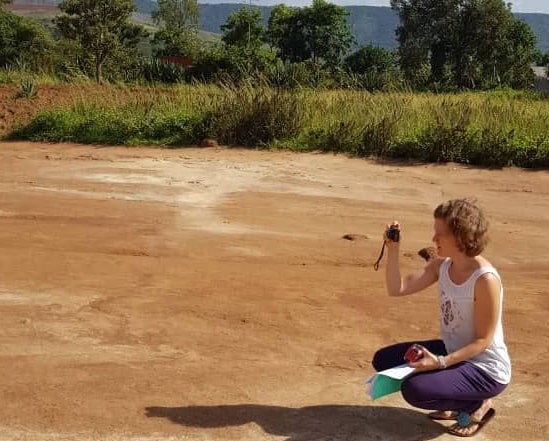
Picture 4: Adriana Bessa prepares for filming (Credit: Adriana Bessa)
Picture 5: Angela Alu at the Ghana Chamber of Mines before a shooting session (Credit: security guard)
Picture 6: Andrea Leuenberger, observing and documenting during fieldwork in Tanzania (Credit: Isaac Lyatuu)
More than a film
But it wasn’t just about the final product. In some cases, working on a film opened up a new way of interacting that proved valuable for the researchers.
In Nepal, Karmacharya found that having a relationship with the local authorities helped to get the filming done – but it also worked the other way around: doing the filming work improved their relationship. It led to more interaction.
James Mwera, a researcher from the Invest in Knowledge Initiative (IKI) inMalawi, whose film is about mental health among adults in the country, had a similar experience. Working with officials from the Ministry of Health wasn’t unusual for him. But because they had to collaborate to create a script for the film, new insights came to the surface. “In this interaction, you will hear things from their angle,” he says. “You hear what they really want to talk about, what they’re really interested to see your research covering.”
Working on the film also gave Mwera an insight into the daily challenges of people who seek healthcare in clinics – the long hours they have to travel and wait just to get a blood test, for example.
The value of having more direct insight into people’s everyday reality stood out for others too. Eschen says the interviews taken during filming really helped to understand how much the landscape has changed in Tanzania over the years as a result of invasive species, and how much that has influenced communities who have a very direct link to the land. “You can only understand the extent to which this happens by talking to them,” he says. “You can’t understand it if you only look at pictures or drive through landscape.”
Bessa believes that what’s really different about filmmaking is giving people space to share their knowledge, instead of gathering answers to prepared ‘guiding’ questions through research. “What people say spontaneously is much more powerful sometimes,” she says.
There’s something about the experience of academics and local communities working together that’s enriching, and stands apart from professional video production, according to Bessa. “It’s not only the story of the community, it’s also the story of the academic – because we sort of draw the lines within which we are going to tell this story.”
“For me it rather served to confirm one of the things that we have known from the beginning, which was that this project was not just about doing academic work that would end up in journal articles. That this is something everyone needs to know about. And then hopefully help to either change behaviour or improve the way things are done. It helped to reinforce that for me.”
Angela Alu, Ghana
Reaching beyond academia
Beyond the fresh insights that arise from interactions with local people, a short video clip is a powerful way to communicate research beyond academia.
Most of the researchers saw great value in having a way to publicise results beyond scientific papers, giving local communities a real voice, and being able to convey concepts that are difficult for others to grasp without visuals. “Sometimes we take for granted that everybody understands what’s going on, on the ground,” says Bessa.
Boiling the research findings down to a short film made Eschen think very differently about them. “The metric for impact for my job is how many papers are published and where I publish them,” he explains. “And that metric doesn’t say anything about whether this research is useful – whether the work will change anyone else’s life.”
Mwera and Karmacharya highlight another benefit: that showing policymakers the reality on the ground opens up new ways for them to get involved.
“If people, the policy makers and everybody else had access to such documentaries, I think they would open more doors in terms of stakeholder involvement.”
James Mwera, Malawi
Footage of how women waste pickers are treated in landfills around Kathmandu can help the authorities to understand the problems and find a solution, according to Karmacharya. “Most of the owners [of waste processing centres], they have not seen the landfill site,” he explains. They simply pile waste in trucks for transport. “Because of this video, they came to know [what] is happening in the system.”
The productions went down well with the researchers and their colleagues, by most accounts. Some wish they could pepper them with more evidence; others wanted to show more footage, or to better reflect the rich conversations caught on camera. All see the power in having a good quality, visual production to share alongside the more typical research outputs.
Creating a film is also simply something to be proud of.
“It’s amazing,” says Leuenberger. “For my colleagues, but also for my family – people that don’t have to do anything with science. It’s not just an ad in the TV or on YouTube. It’s a different connection.”
Sonja Schenkel, Switzerland
“This is relational work – communication is about relationships, it’s not just about the final product.”
“The opportunity lies really in using media that is oral, that is universally accessible through cell phones for instance – and which actually pushes you to consciously address the issue of who you allow to speak on behalf of your project.”
Video doesn’t require you to be able to write in a certain way, neither does it require you to speak English. That enables you to start developing a shared stream of knowledge.
Storytelling is not just for the one who eventually witnesses your story, but it’s also a process of becoming conscious about your priority content and who you want to be. Not just for documentation, but for assuming ownership and fostering empowerment.”
Related Posts
Für eine neue Kultur des Scheiterns
Gender Dimensions in Peacebuilding
Sources
Learn more:
The Digital Storytellers Synthesis Project and e-learning suite:
https://paititi-lab.org/blog-digitalstorytellers/
r4d programme synthesis:
http://www.r4d.ch/r4d-programme/synthesis
All video clips from the Digital Storytellers project and other r4d synthesis projects:
https://www.k4d.ch/category/formats/videos/
About the author:
Anita Makri is a freelance writer/editor/producer based in London
